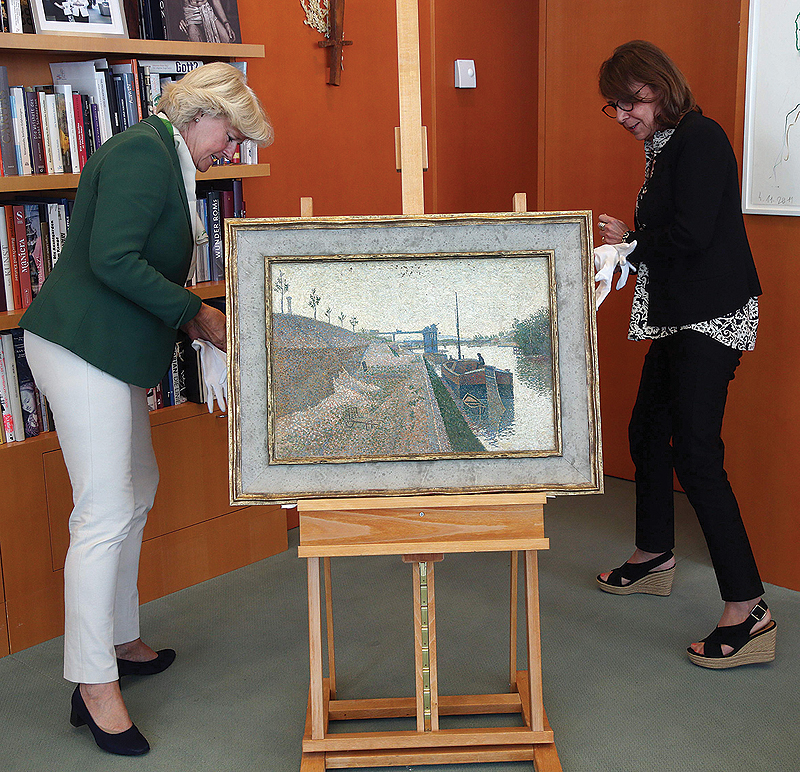Germany yesterday returned a painting looted by the Nazis which ended up in the spectacular art hoard of Cornelius Gurlitt, the son of a Third Reich-era art dealer. "Quai de Clichy. Temps gris" by Paul Signac was handed back to the family of French real estate broker Gaston Prosper Levy, in the sixth such return from Gurlitt's trove. Investigators looking into the provenance of paintings in the stash left behind by Gurlitt found eyewitness accounts of German soldiers seizing the Signac work from Levy's property in France in 1940.
"A countless number of the mostly Jewish collectors of art and cultural goods like Gaston Prosper Levy were persecuted, robbed or expropriated by Nazis," said Germany's Culture Minister Monika Gruetters. "Others have had to sell their property far below its value or leave it behind while fleeing or emigrating. We can never make good on the suffering and injustice." Such returns are important, the minister said, as they offer "at least a little bit of historical justice".

More than 1,500 artworks were discovered in 2012 in the possession of Munich pensioner Gurlitt. His father, Hildebrand Gurlitt, had worked as an art dealer for the Nazis from 1938. The discovery of the stash made headlines around the world and revived an emotional debate about how thoroughly post-war Germany had dealt with art plundered by the Nazi regime. When Gurlitt died, the Bern museum accepted the collection, though it left about 500 works in Germany for a government task force to research their often murky origins. Determining their provenance has been slow, and it remained unclear how many of the works were stolen.-AFP









